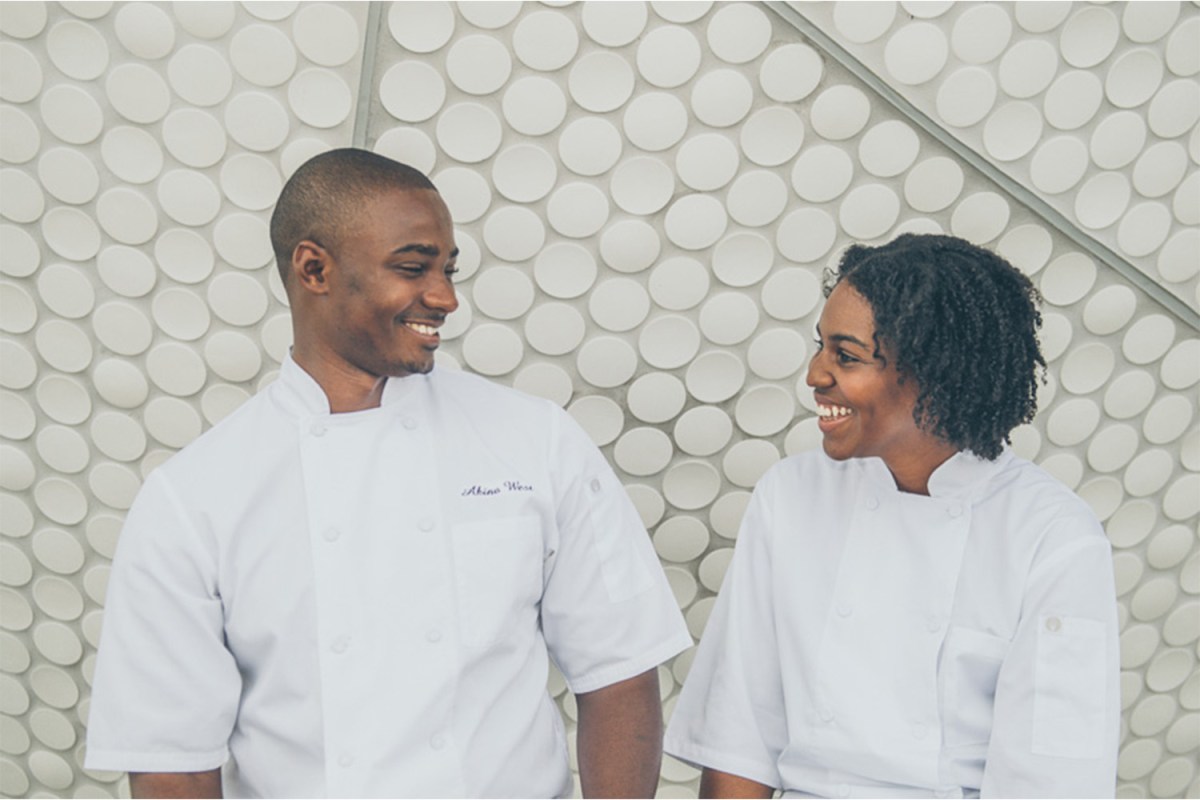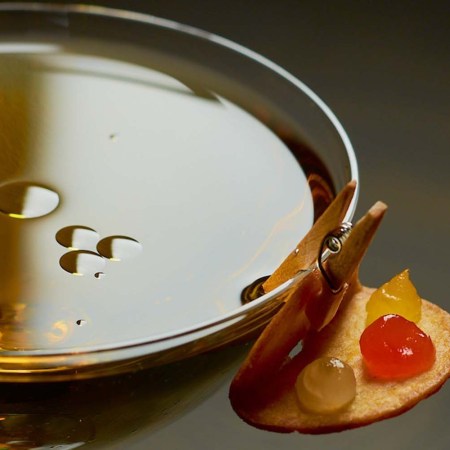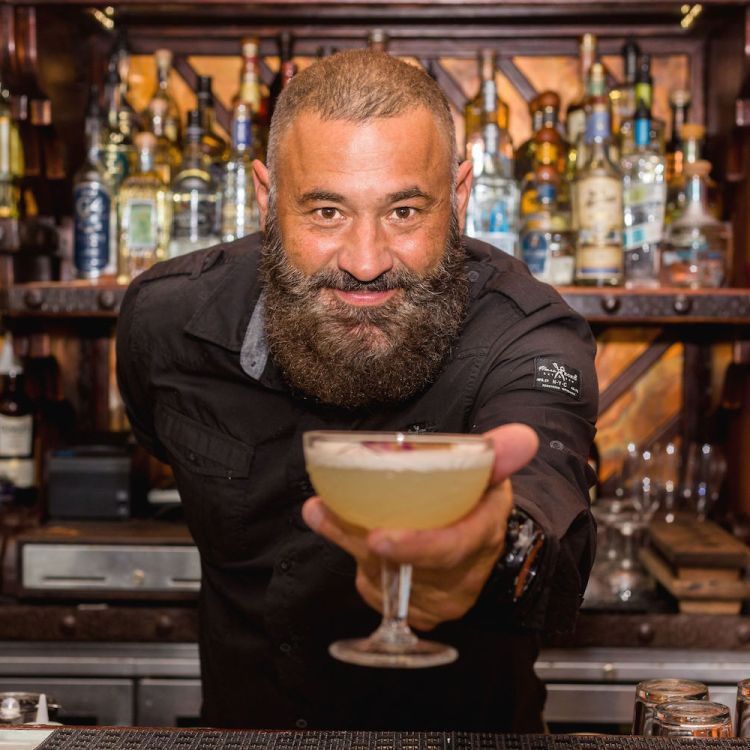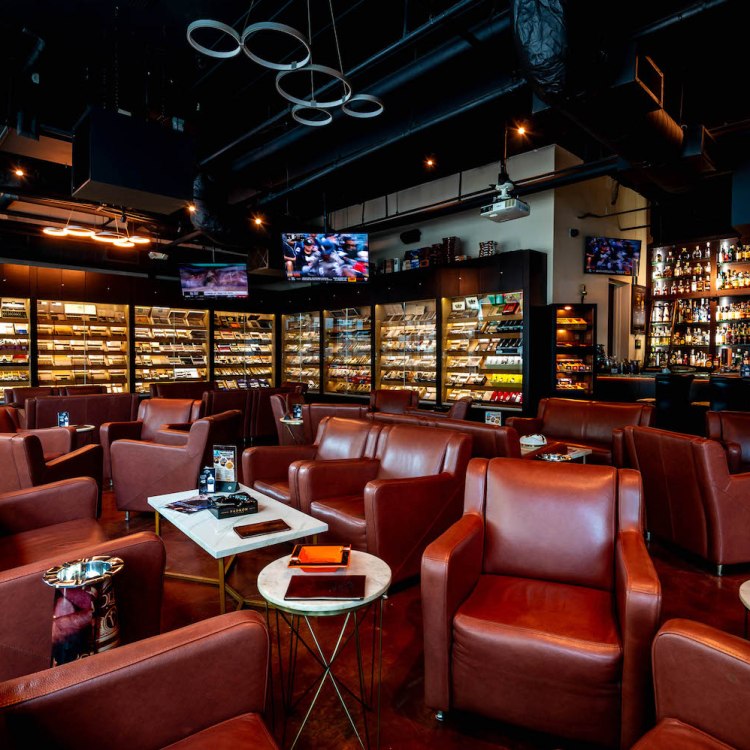Early this year, René Redzepi announced that his Noma would be closing its doors at the end of 2024, citing the unsustainability of the fine dining model as his primary motivation. An ensuing onslaught saw a host of previous staffers and interns accusing Redzepi and his restaurant — widely recognized as the best in the world — of creating too grueling a work environment, with one former intern claiming she was forbidden from laughing while working and many highlighting the restaurant’s reliance on unpaid labor as an example of what’s so broken in the world of Michelin-caliber establishments.
But Chef Akino West, a recent Emerging Chef James Beard Award nominee and co-owner of Rosie’s: The Backyard with his wife Jamila West, remembers things a bit differently.
“Some people are like, ‘I sat there for hours picking thyme,’” he says. “Like, yes! I sat there too, for hours, picking thyme. But you know, I learned how to pick thyme perfectly.”
In his six months at the storied restaurant, West took advantage of his proximity to the best in the business to reap any kernel of knowledge he could. It’s an attitude perhaps born of the fact that the opportunity was never a done deal.
“To be honest, I didn’t have the money to do it,” he says, “but my mom was like, ‘Whatever we need to do to make sure you get there, let’s do it.’”
In addition to the support of his family, West also received help from Chef Michael Schwartz, his then-employer, who allowed West to cook a dinner to fund his trip.
“Most chefs I’ve worked for would never think about saying, ‘Hey, this young kid just wants to learn and grow, but how can I help them learn and grow?’” says West. “But that’s exactly what he did.”
Once he got to Noma, West took every opportunity to improve his skills as a chef. “I worked every station there. That was my goal,” he says, noting that the frustration many of his colleagues felt may have been due to the fact that not everyone even got the chance to work on the line.
“It’s competitive. You’re competing against 30, 40 chefs. It’s not just you,” he explains. “Only two of us got the opportunity to be in the test kitchen and play around and really see how creative these chefs can be. And that’s what drove me to continue going every day.”
While West claims Redzepi’s announcement to shutter was indeed “a little shocking,” he’s just as surprised by the blowback.
“To be honest, you hear all these stories, everyone saying that they felt overworked and stuff,” he says. “For me it was like… this was what I came for. I came for the hustle. I came for the grind. I came to get pushed every single day.”
And he has quite a bit to show for it. Aside from how to pick thyme perfectly, here are five things that Chef West learned from his six months at the world’s best restaurant.
Pickling and fermenting (Duh.)
While West’s current restaurant is a clear departure from the world of fine dining, he says that many of the meticulous techniques he mastered at Noma still hold water.
“A technique is a technique,” he says. “We still do fermenting. We still do pickling. We still, you know, currently still use tweezers.” He laughs. “I feel like everything we’ve learned, it still comes into play in some type of way.”
Redzepi is particularly well-known for his use of pickling and fermenting, something West remembers well from his time in Copenhagen. “Specifically we had to pick and pickle pine shoots, like baby pine shoots,” he recalls. “Maybe it’s impossible to find pine shoots out here, but the technique is still the same, you know.”
To wit, at Rosie’s, his hot sauce is fermented in-house, and bread and butter pickles are a frequently used accompaniment, counterbalancing rich fried chicken to perfection.
How to run a restaurant as a business
West may have arrived in his current career thanks to a passion for feeding people, but one major takeaway he left Noma with is his enterprising mindset.
“If you ever met me in real life, you’d be like, ‘Oh, he’s cool, but he’s all about the business,’” he says. “That’s what I learned from Noma.”
At Rosie’s specifically, he implores his cooks to remember the business whenever they’re crafting a new dish, asking them to consider not just how the new offering fits into the branding and philosophy of the restaurant — “a Southern concept with Italian nuances” — but also the cogs of the kitchen.
“If you bring me a dish, come to me with a business plan, not just an idea,” he says. “I’m open to ordering the items that you want. I’m open to exploring it. But make sure that you have everything written down: This is why. This is how. This is the procedure for pick-up.”
It’s not only a way to better allocate resources, but it also gives cooks the opportunity to see themselves as part of the business and ultimately encourage them to grow too.
How to take care of his staff
While Redzepi has gotten some flack for relying on an unpaid workforce, West paints a different picture of the chef, who he says has always been willing to second-guess himself and take strides towards improvement. During one return visit to Noma, West was pleasantly surprised to learn that Redzepi had set up a workout station for members of staff.
“They were like, ‘Oh, Chef René wants us all to start working out and being more healthy and more fit and more active, so that we’re not just destroying our bodies,’” he recalls. “Literally on the side of the restaurant, he had a little workout area, like pull-up bars and little small dumbbells, and he had an area where they could relax and rest. That’s where I saw a change. And I feel like he’s always been a leader in that change.”
For his part, West has spent quite a bit of time ensuring that growth for the business isn’t detrimental to his staff — one main reason he opened a brunch concept before a fine dining restaurant.
The Ingredients That Defined 2025
From the unsung heroes to the ones we’re tired of seeing, here’s how America ate this year“If I’d had the opportunity to open a fine dining restaurant before opening a casual restaurant, I would have done it,” he says, noting nevertheless that he could already see how unsustainable such a model could be.
“For me, the hardest thing was: How can we provide healthcare? How can we provide time off as a small business?” he says. “Before we get to that level of being Michelin or a fine dining restaurant, we want to be able to hit those markers first and make sure that we can focus on the people as well.”
Before opening a fine dining concept, he says, there are a lot of elements to consider, chief among them being the effect on personnel.
“Saying like, ‘What are you comfortable with? How many days are you comfortable working? How many hours are you comfortable working?’” he says. “And then we can fill in those gaps and say like, all right, this works for us and this doesn’t.”
That the devil’s in the details
That Redzepi is detail-oriented may well be the biggest understatement of the century, but it bears repeating.
“One day they gave us fermented rose petals,” West recalls. “They wanted us to go through each individual leaf, open them up, spread them out with an offset spatula, and they had to be perfectly — and I mean perfectly — round. No edges, no miscuts. So if you picked one up and you accidentally tore it, it was trash.”
The perfect rose petals were then stacked on layers of parchment paper before being compressed to remove any liquid.
“I just took so much time to do it, and if one of the chefs made a mistake and picked it up the wrong way, with the offset spatula, or tore it, all your hard work was probably going to go in the trash, because it had to be perfect,” he says. “But for me, it didn’t hurt. It didn’t disappoint me. It made me open my eyes up to…this is what it takes to be at this level. Everything. Every single detail had to be perfect to be number one.”
He reaped the benefits of that detail-oriented nature when he dined at Noma, his reward for making the best staff meal in the month. (More on that later.) Finally on the other side of the pass, the dish West remembers best was a fire-roasted leek he himself had picked out of the frozen ground.
“I think it was like, 10 of us in a van,” he recalls. “We had to dig them out from the sides so that the leeks, the roots were still attached.”
The leek was then cored and filled with fermented blueberry and ceps for a trompe l’oeil of the highest order.
“You see a leek on the table, a roasted leek, that’s all you see,” he says. “The approach of how he cooked all his food was that that one individual item shined by itself. Like you didn’t need anything additional to make this item amazing.”
That his fried chicken is actually the best
West’s opportunity to dine at Noma was a clear result of his competitive nature: a prize for concocting the best family meal of the month. And while West and a colleague were responsible for a week’s worth of breakfasts and lunches, the meal that garnered them the most praise — and the prize — was the Southern menu of mac and cheese, collard greens, sweet potatoes and fried chicken.
“Front of house, back of house, everyone enjoyed it,” he recalls. “And there were people from all around the world, so it’s something that they normally don’t get a chance to indulge in. It’s something they’ve never seen before. They’ve had fried chicken, but have they had our fried chicken? Probably not.”
It’s a recipe West now knows by heart: After all, it’s one of the stars of his menu at Rosie’s.
“When I came up with that recipe that day, and everyone really loved it, I was like, let me pocket this, one day I’m gonna need it,” he says. “And guess what? I needed it.”
This article appeared in an InsideHook newsletter. Sign up for free to get more on travel, wellness, style, drinking, and culture.





















